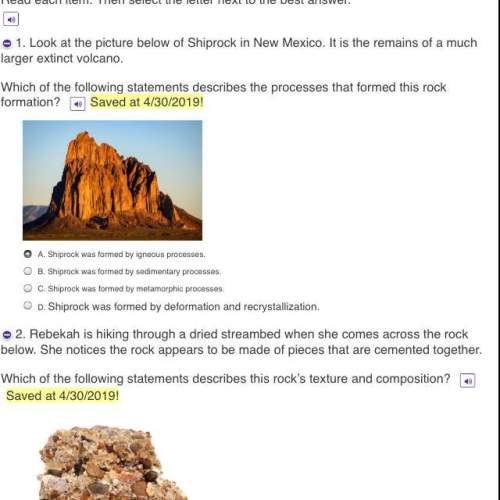
Let’s say that a series of enzymatic reactions results in the conversion of glycogen (a polysaccharide stored in the liver) to glucose monomers (used in the bloodstream for energy).
a. If negative feedback occurred in this pathway, how would enzymes in the pathway be affected, and how would the amount of glucose produced be affected?
b. If positive feedback occurred in this pathway, how would enzymes in this pathway be affected, and how would the amount of glucose produced be affected?
c. Is it more likely that the breakdown of glycogen is controlled by negative or positive feedback? Why? Relate your answer to homeostasis.

Answers: 2


Other questions on the subject: Biology

Biology, 21.06.2019 15:00, Jennybelandres1
Forces that are equal in strength but opposite in direction are a.) balanced b.) unbalanced c.) always result in motion d.) do not exist
Answers: 2


Biology, 22.06.2019 06:50, Shaylaharrison15
The kidney filters potentially toxic substances in the blood, and thus “clears” the blood of those substances. this clearance function is dependent upon and proportional to the diffusion gradient of the substance across filtering capillaries, i. e. if the concentration of the substance is doubled, twice as much will be cleared from each ml of blood that is filtered. suppose that the body produces a constant amount of a substance x per unit of time. the kidneys eliminate substance x at a rate directly proportional to the concentration of the substance and the volume of blood cleared each minute (c): elimination = c × [x], where [x] is the steady-state concentration of substance x. imagine an individual with an initial concentration of x equal to [x]0 who develops kidney disease. her baseline clearance c0 drops to one half of the original (½c0). what is the new steady state concentration of x? (for simplicity, assume that substance x is 100% filtered by the kidney).
Answers: 1

Biology, 22.06.2019 07:30, china2221
The ancestors of plants that lived in water had plenty of water for the young. angiosperms are a group of land plants that evolved a reproductive trait for living on land. this trait protect young plants by allowing them to grow only when water is present and the conditions for healthy development are right. what trait most likely young angiosperms in this way?
Answers: 1
You know the right answer?
Let’s say that a series of enzymatic reactions results in the conversion of glycogen (a polysacchari...
Questions in other subjects:

Mathematics, 03.03.2021 05:40




History, 03.03.2021 05:40


Business, 03.03.2021 05:40

Mathematics, 03.03.2021 05:40

Mathematics, 03.03.2021 05:40




